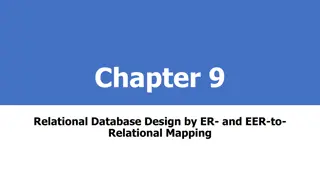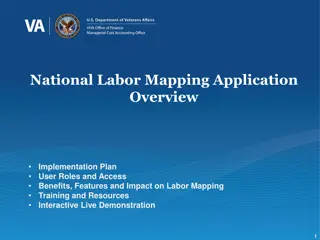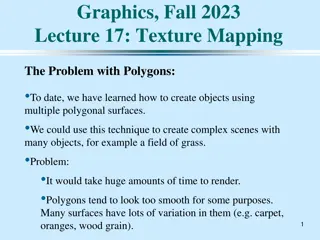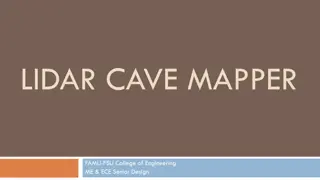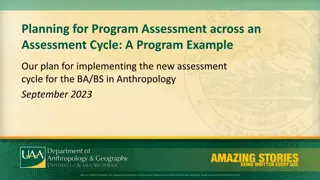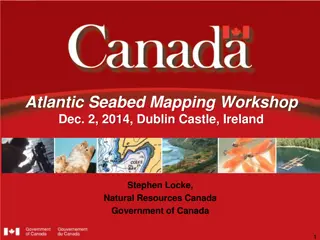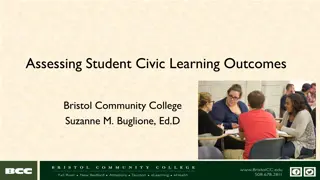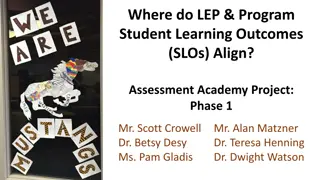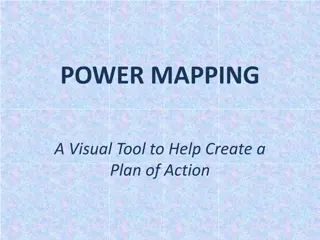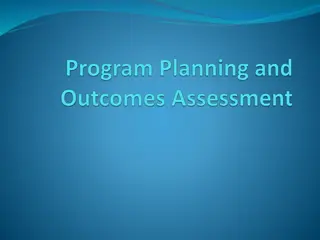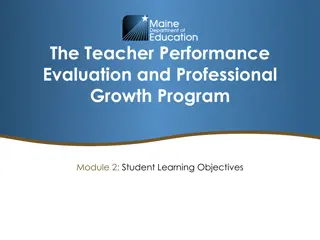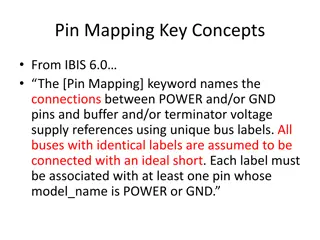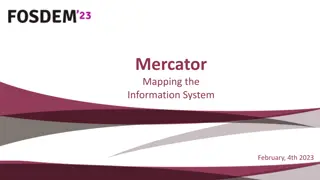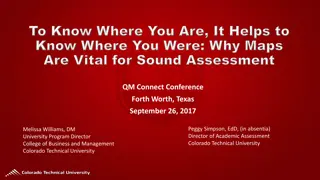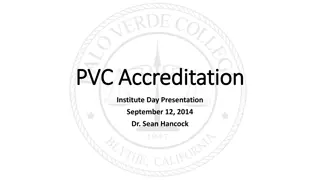Effective Mapping Strategies for Aligning Student Learning Outcomes (SLOs) with Program Learning Outcomes (PLOs)
Explore effective strategies for aligning Student Learning Outcomes (SLOs) with Program Learning Outcomes (PLOs) to enhance PLO assessment. Understand the connection between PLOs and SLOs as key elements in the education mapping process. Discover top-down and bottom-up approaches to strategically map SLOs to relevant PLOs, ensuring a focused and targeted alignment. Avoid row or column mapping pitfalls to maintain the uniqueness and efficacy of both SLOs and PLOs.
Download Presentation

Please find below an Image/Link to download the presentation.
The content on the website is provided AS IS for your information and personal use only. It may not be sold, licensed, or shared on other websites without obtaining consent from the author.If you encounter any issues during the download, it is possible that the publisher has removed the file from their server.
You are allowed to download the files provided on this website for personal or commercial use, subject to the condition that they are used lawfully. All files are the property of their respective owners.
The content on the website is provided AS IS for your information and personal use only. It may not be sold, licensed, or shared on other websites without obtaining consent from the author.
E N D
Presentation Transcript
THE CONNECTION BETWEEN PLOS AND SLOS Goal: Effective Data for PLO assessment Think of PLOs like a Destination on a map. The SLOs for programmatic courses are like Landmarks leading to the Destination. SLOs should be mapped to PLOs selectively. SLOs should centrally and directly relate to the PLOs they map to it is not the goal to check all that apply. Not all Landmarks will lead to a Destination!
TOP DOWN APPROACH Start with the PLOs Ask: which courses best support this specific PLO? From there, examine the course SLOs and selectively map each SLO to the relevant PLO.
BOTTOM UP APPROACH Start with the SLOs Ask: 1) Which course SLOs are building the foundational knowledge and skills measured in the PLOs? 2) Are they at the introductory/development level or are they at the masterly level? This approach can be a useful way to start writing/refining PLOs as you identify themes and categories of SLOs.
CERTIFICATE IN TRAVEL PLO 1 PLO 2 PLO 3 Students will apply principles of navigation to travel planning Students will develop itineraries to maximize time Students will analyze a travel destination for safety and enjoyment SLO 1: Students will identify principles of navigation. SLO 2: Students will identify time zones. SLO 3: Students will evaluate destinations for safety. SLO 4: Students will create maps.
AVOID ROW OR COLUMN MAPPING PLO 1 PLO 2 PLO 3 Students will apply principles of navigation to travel planning Students will develop itineraries to maximize time Students will analyze a travel destination for safety and enjoyment SLO 1: Students will identify principles of navigation. SLO 2: Students will identify time zones. SLO 3: Students will evaluate destinations for safety. SLO 4: Students will create maps.
AVOID ROW OR COLUMN MAPPING Row Pattern: Having an SLO map to all the PLOs. Problem: The SLOs don t function as unique indicators of the PLOs. PLOs will have the exact same outcome data, based on all the same SLOs. PLO performance will then look identical across PLOs. Indicates an overly broad SLO. Column Pattern: A PLO is assessed will all or most of the programmatic SLOs. Problem: When assessing the PLOs, this pattern will make identifying why students are performing well or not challenging, as PLO performance may be based on too many or unrelated skills. Indicates overly general PLO.
WORST: OVERMAPPING! PLO 1 PLO 2 PLO 3 Students will apply principles of navigation to travel planning Students will develop itineraries to maximize time Students will analyze a travel destination for safety and enjoyment SLO 1: Students will identify principles of navigation. SLO 2: Students will identify time zones. SLO 3: Students will evaluate destinations for safety. SLO 4: Students will create maps.
OVERMAPPING Most SLOs are mapped to most of the PLOs. Problem: Outcome data for this pattern may be impossible to interpret as the data will be highly similar across all PLOs and it will make identifying why students are performing well or not challenging. Indicates overly broad PLOs that may need to be refined.
CERTIFICATE IN TRAVEL PLO 1 PLO 2 PLO 3 Students will apply principles of navigation to travel planning Students will develop itineraries to maximize time Students will analyze a travel destination for safety and enjoyment SLO 1: Students will identify principles of navigation. SLO 2: Students will identify time zones. SLO 3: Students will evaluate destinations for safety. SLO 4: Students will create maps.
IDEAL PATTERN Each PLO is assessed by a unique pattern of SLOs across multiple courses. PLO performance will vary and skill deficits can be more easily identified. Generates usable data to meaningfully improve programs! An ideal map can highlight weak SLOs or unnecessary courses. Not all SLOs must be mapped to PLOs.
KEY TAKEAWAYS FOR MAPPING When mapping SLOs, be selective. SLOs should directly, centrally relate to a mapped PLO. Not all course SLOs need to map to PLOs Only programmatic courses. One SLO within a programmatic course should map to at least one PLO. Avoid row, column, and overmapping SLO/PLO mapping patterns. Unmapped SLOs are possible but critically evaluate their necessity. Ask: Which of the SLOs will be the best indicators of the PLO?


